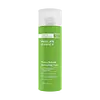What's inside
What's inside
 Key Ingredients
Key Ingredients

 Benefits
Benefits

 Concerns
Concerns

 Ingredients Side-by-side
Ingredients Side-by-side

Water
Skin ConditioningGlycerin
HumectantSodium Hyaluronate
HumectantChamomilla Recutita Flower Extract
MaskingVitis Vinifera Seed Extract
AntimicrobialCamellia Sinensis Leaf Extract
AntimicrobialCamellia Oleifera Leaf Extract
AstringentAvena Sativa Kernel Extract
AbrasivePunica Granatum Extract
AstringentSambucus Nigra Fruit Extract
AstringentPeucedanum Graveolens Extract
TonicLycium Barbarum Fruit Extract
AstringentHydrogenated Lecithin
EmulsifyingTocopherol
AntioxidantHelianthus Annuus Seed Oil
EmollientPrunus Amygdalus Dulcis Oil
Skin ConditioningVaccinium Macrocarpon Fruit Extract
AstringentOlea Europaea Fruit Oil
MaskingVaccinium Myrtillus Seed Oil
Skin ConditioningArginine
MaskingGlycine
BufferingAlanine
MaskingSerine
MaskingValine
MaskingProline
Skin ConditioningThreonine
Isoleucine
Skin ConditioningHistidine
HumectantPhenylalanine
MaskingAspartic Acid
MaskingSodium PCA
HumectantSodium Lactate
BufferingPCA
HumectantXanthan Gum
EmulsifyingLeuconostoc/Radish Root Ferment Filtrate
AntimicrobialBenzyl Alcohol
PerfumingPhenoxyethanol
PreservativeWater, Glycerin, Sodium Hyaluronate, Chamomilla Recutita Flower Extract, Vitis Vinifera Seed Extract, Camellia Sinensis Leaf Extract, Camellia Oleifera Leaf Extract, Avena Sativa Kernel Extract, Punica Granatum Extract, Sambucus Nigra Fruit Extract, Peucedanum Graveolens Extract, Lycium Barbarum Fruit Extract, Hydrogenated Lecithin, Tocopherol, Helianthus Annuus Seed Oil, Prunus Amygdalus Dulcis Oil, Vaccinium Macrocarpon Fruit Extract, Olea Europaea Fruit Oil, Vaccinium Myrtillus Seed Oil, Arginine, Glycine, Alanine, Serine, Valine, Proline, Threonine, Isoleucine, Histidine, Phenylalanine, Aspartic Acid, Sodium PCA, Sodium Lactate, PCA, Xanthan Gum, Leuconostoc/Radish Root Ferment Filtrate, Benzyl Alcohol, Phenoxyethanol
Water
Skin ConditioningCyclopentasiloxane
EmollientButylene Glycol
HumectantGlycereth-26
HumectantDimethiconol
EmollientOenothera Biennis Oil
EmollientBorago Officinalis Seed Oil
EmollientSodium Hyaluronate
HumectantTocopheryl Acetate
AntioxidantTocopherol
AntioxidantAscorbyl Palmitate
AntioxidantPanthenol
Skin ConditioningAllantoin
Skin ConditioningGlycerin
HumectantHydrogenated Lecithin
EmulsifyingCaprylic/Capric Triglyceride
MaskingNiacinamide
SmoothingSuperoxide Dismutase
AntioxidantPEG-40 Hydrogenated Castor Oil
EmulsifyingMyristamidopropyl Pg-Dimonium Chloride Phosphate
Skin ConditioningLaureth-4
EmulsifyingLaureth-23
CleansingDisodium EDTA
Sodium Benzoate
MaskingChlorphenesin
AntimicrobialPhenoxyethanol
PreservativeBenzoic Acid
MaskingSorbic Acid
PreservativeWater, Cyclopentasiloxane, Butylene Glycol, Glycereth-26, Dimethiconol, Oenothera Biennis Oil, Borago Officinalis Seed Oil, Sodium Hyaluronate, Tocopheryl Acetate, Tocopherol, Ascorbyl Palmitate, Panthenol, Allantoin, Glycerin, Hydrogenated Lecithin, Caprylic/Capric Triglyceride, Niacinamide, Superoxide Dismutase, PEG-40 Hydrogenated Castor Oil, Myristamidopropyl Pg-Dimonium Chloride Phosphate, Laureth-4, Laureth-23, Disodium EDTA, Sodium Benzoate, Chlorphenesin, Phenoxyethanol, Benzoic Acid, Sorbic Acid
 Reviews
Reviews

Ingredients Explained
These ingredients are found in both products.
Ingredients higher up in an ingredient list are typically present in a larger amount.
Glycerin is already naturally found in your skin. It helps moisturize and protect your skin.
A study from 2016 found glycerin to be more effective as a humectant than AHAs and hyaluronic acid.
As a humectant, it helps the skin stay hydrated by pulling moisture to your skin. The low molecular weight of glycerin allows it to pull moisture into the deeper layers of your skin.
Hydrated skin improves your skin barrier; Your skin barrier helps protect against irritants and bacteria.
Glycerin has also been found to have antimicrobial and antiviral properties. Due to these properties, glycerin is often used in wound and burn treatments.
In cosmetics, glycerin is usually derived from plants such as soybean or palm. However, it can also be sourced from animals, such as tallow or animal fat.
This ingredient is organic, colorless, odorless, and non-toxic.
Glycerin is the name for this ingredient in American English. British English uses Glycerol/Glycerine.
Learn more about GlycerinHydrogenated Lecithin is created from the hydrogenation of lecithin (a group of phospholipids). Hydrogenation is a chemical reaction between hydrogen and another element.
This ingredient is an emollient and emulsifier. As an emollient, it helps soften skin by trapping moisture within. As an emulsifier, it prevents oil and water ingredients from separating.
Phenoxyethanol is a preservative that has germicide, antimicrobial, and aromatic properties. Studies show that phenoxyethanol can prevent microbial growth. By itself, it has a scent that is similar to that of a rose.
It's often used in formulations along with Caprylyl Glycol to preserve the shelf life of products.
Sodium Hyaluronate is hyaluronic acid's salt form. It is commonly derived from the sodium salt of hyaluronic acid.
Like hyaluronic acid, it is great at holding water and acts as a humectant. This makes it a great skin hydrating ingredient.
Sodium Hyaluronate is naturally occurring in our bodies and is mostly found in eye fluid and joints.
These are some other common types of Hyaluronic Acid:
Learn more about Sodium HyaluronateTocopherol (also known as Vitamin E) is a common antioxidant used to help protect the skin from free-radicals and strengthen the skin barrier. It's also fat soluble - this means our skin is great at absorbing it.
Vitamin E also helps keep your natural skin lipids healthy. Your lipid skin barrier naturally consists of lipids, ceramides, and fatty acids. Vitamin E offers extra protection for your skin’s lipid barrier, keeping your skin healthy and nourished.
Another benefit is a bit of UV protection. Vitamin E helps reduce the damage caused by UVB rays. (It should not replace your sunscreen). Combining it with Vitamin C can decrease sunburned cells and hyperpigmentation after UV exposure.
You might have noticed Vitamin E + C often paired together. This is because it is great at stabilizing Vitamin C. Using the two together helps increase the effectiveness of both ingredients.
There are often claims that Vitamin E can reduce/prevent scarring, but these claims haven't been confirmed by scientific research.
Learn more about TocopherolWater. It's the most common cosmetic ingredient of all. You'll usually see it at the top of ingredient lists, meaning that it makes up the largest part of the product.
So why is it so popular? Water most often acts as a solvent - this means that it helps dissolve other ingredients into the formulation.
You'll also recognize water as that liquid we all need to stay alive. If you see this, drink a glass of water. Stay hydrated!
Learn more about Water